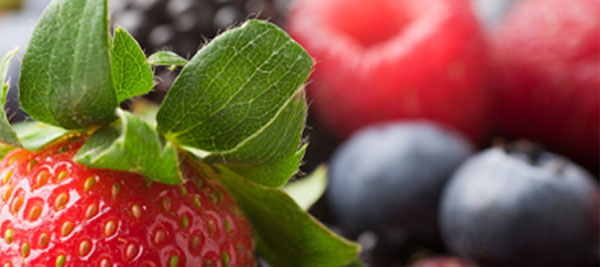
Nutrition Notes
Both turnips and rutabagas are high in fibre and low in calories.Per cup, turnips have only 36 calories and 2 grams of fibre, while rutabagas have 50 calories and 4 grams of fibre. Both are good sources of calcium, potassium, vitamin B6 and folate and excellent sources of dietary fibre and vitamin C.Varieties
There are a number of different varieties of both turnips and rutabagas. Turnips are available in a variety of colours including white, yellow, red and pink. The shape of the root can be long, round or flat. Rutabagas are available with white flesh or yellow flesh.Buying
When buying these root vegetables, look for the following:
Turnip: Choose small, young turnips that are heavy for their size. Younger turnips will have a more delicate, sweet taste as well as a finer texture, compared with older turnips. Look for roots on the turnip that are firm and if the greens are still attached, make sure they are brightly coloured and not wilted.
Rutabaga: When shopping for rutabagas choose those that are firm, fresh looking, heavy for their size and smooth with little or no cuts or punctures. It is not uncommon to find commercially grown rutabagas covered with wax for storage purposes.
Storing
If stored just above 0C in an environment with high humidity, such as a cellar, rutabagas and turnips (with tops still attached) will stay good for up to 4 to 6 months. Be sure to store these root vegetables in an area that receives proper ventilation. If storing in the refrigerator, wrap the turnips or rutabagas tightly in a plastic bag, much as you would carrots. At a higher temperature, such as in a refrigerator, these vegetables will stay fresh for up to a month.Preparing
To prepare turnips for eating, wash, peel and trim the vegetables as necessary. If you have very young turnips, they do not need to be peeled due to their tender flesh. Simmer or steam the vegetable until tender.
Prepare rutabagas in a similar way to turnips, peel, wash, trim and dice as necessary. Rutabagas will disintegrate if overcooked, therefore when cooking rutabagas; you must check them frequently while cooking.
Baking: For both turnip and rutabaga, place �-inch thick slices in a shallow baking dish. Sprinkle with a few tablespoons of water and bake in a 350 F oven until tender. Turnips bake for approximately 30 to 45 minutes and rutabagas for 50 to 60 minutes.
Boiling: Place either whole or sliced turnips or rutabagas (peeled) into a pot of boiling water. To sweeten the flavour, add a teaspoon of sugar to the pot. Whole turnips will boil for 20 to 30 minutes until cooked through, while slices will take approximately 6 to 8 minutes. Whole rutabagas will take roughly 25 to 35 minutes to cook in boiling water, while slices of rutabagas will take 7 to 10 minutes.
Microwaving: Place one pound of either turnips or rutabagas in a microwavable baking dish, cover with 3 tablespoons of liquid. After cooking for about 4 minutes, take out and stir. Continue cooking for 3 to 5 minutes or until tender.
Stir-frying: Add thinly sliced turnips or rutabagas to stir-fry. Total cooking time is 6 to 7 minutes.
Eating
While turnips and rutabagas are good when served on their own, they tend to do well combined with other root vegetables in soups and stews. While much of the world has traditionally regarded turnips and rutabagas as food reserved for livestock, the French have taken special interest in these vegetables. Many tasty and flavourful recipes using these vegetables have originated from this part of the world. The French are known to work wonders with these roots and certain parts of the country are renowned for growing especially good varieties.
Healthy Ways to Enjoy Parnips and Rutabagas:
Breakfast
- Roast cubed rutabagas with maple syrup, salt and pepper until slightly crispy. Serve as an alterative to hash browns with scrambled eggs and fresh fruit for a fulfilling breakfast.
Lunch
- Use pureed turnips and rutabagas as the base of hearty, thick soups. Serve leftover soup for a satisfying lunch with warm, crusty whole grain bread.
- Stir fry julienne-cut rutabagas and turnips with fresh ginger, garlic and snap peas. Top with your favourite low-fat stir-fry sauce.
Dinner
- Combine diced turnips and rutabagas with your other favourite root vegetables in a roasting pan. Drizzle with olive oil, dried rosemary and thyme and bake until tender and slightly crispy.
- Use rutabagas or turnips as the base of a creamy gratin. Be sure to use low fat milk or even soymilk instead of heavy cream for a lower fat version.
- Puree cooked turnips (or rutabagas) with potatoes and apples. Sprinkle with ground nutmeg. Serve as a side dish with pork tenderloin or ham.
Snacks
- Peel and wash raw rutabaga, slice into coins and enjoy as a snack with your favourite low fat dip.
Did you know?
- Turnips are known as one of the earliest cultivated vegetables. They originated in Northern Europe in 2000 B.C.
- In China, turnips are often sun-dried in strips then salted or preserved in soy sauce.
- Turnips and Rutabagas are part of the Brassica genus; other vegetables in this category include broccoli, cabbage, cauliflower and Brussels sprouts.









